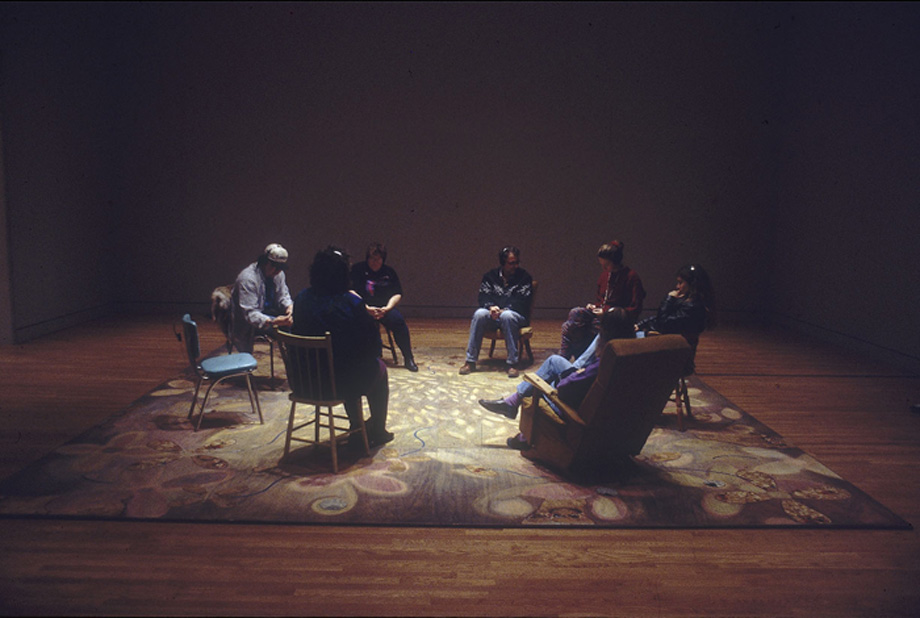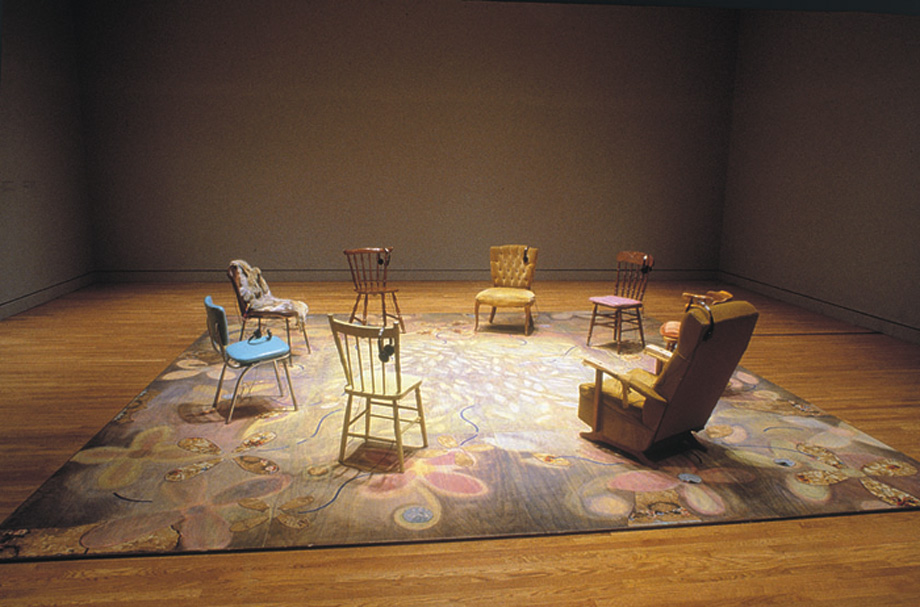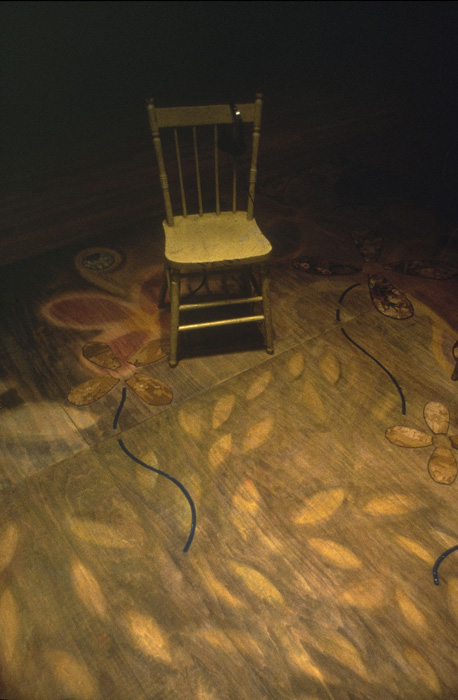If there was, as [Robert] Houle claims, a negotiation about identity going on in most of the works in the exhibition, nowhere was that more movingly enacted than in Rebecca Belmore’s work, Mawu-che-hitoowin: A Gathering of People for Any Purpose. On a plywood floor, partly laid with bits of old patterned linoleum, sat a circle of chairs, all of them different, all of them worn with use. The chairs fitted with audio tapes: the viewer was invited to sit in the chairs and use headphones to hear the voices and stories of the seven different women who had donated them, each one telling of her own experiences. (One recording was of bird song.) This work’s power depended upon the voices and stories of loved ones, community, children and parents. It was a political gesture for Belmore to feature those voices in the space allocated to her art. Here it was perfectly clear that narrative, identity and subjectivity are not just abstract issues, but concrete ones, tied to life.
Scott Watson, Whose Nation?, Canadian Art, Spring 1993
Photo credit: Louis Joncas / National Gallery of Canada



